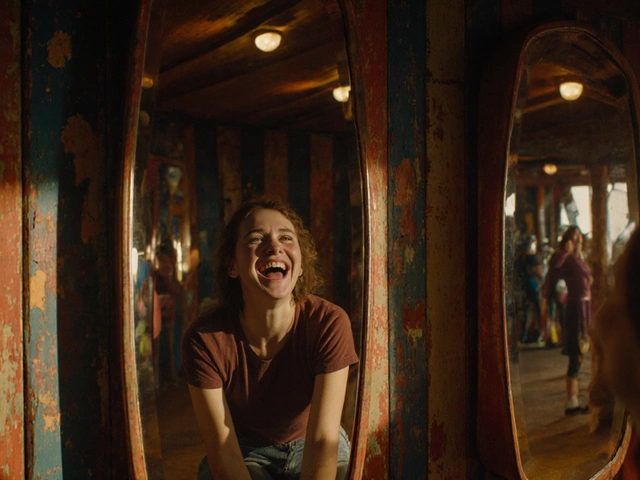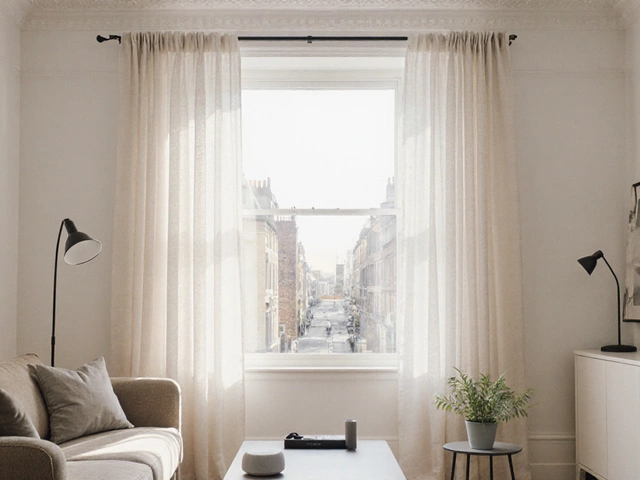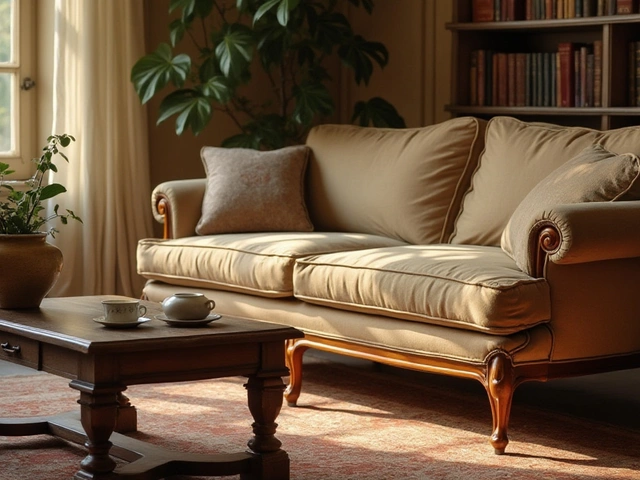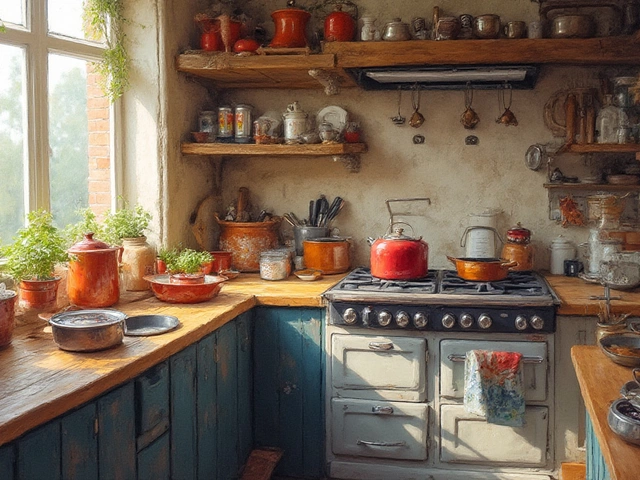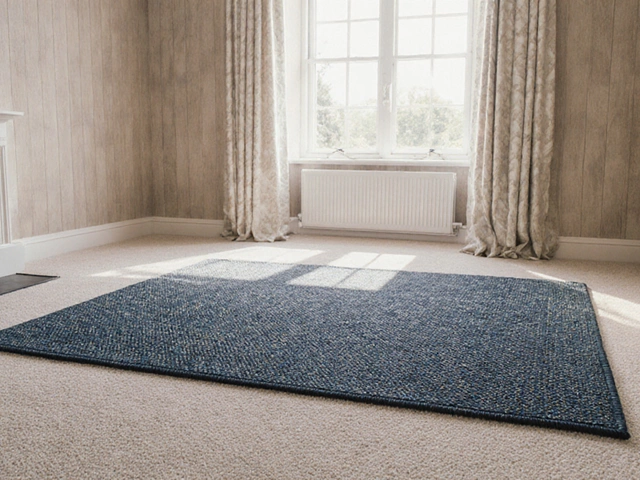How Much Does a High Quality Rug Really Cost? 2025 Guide
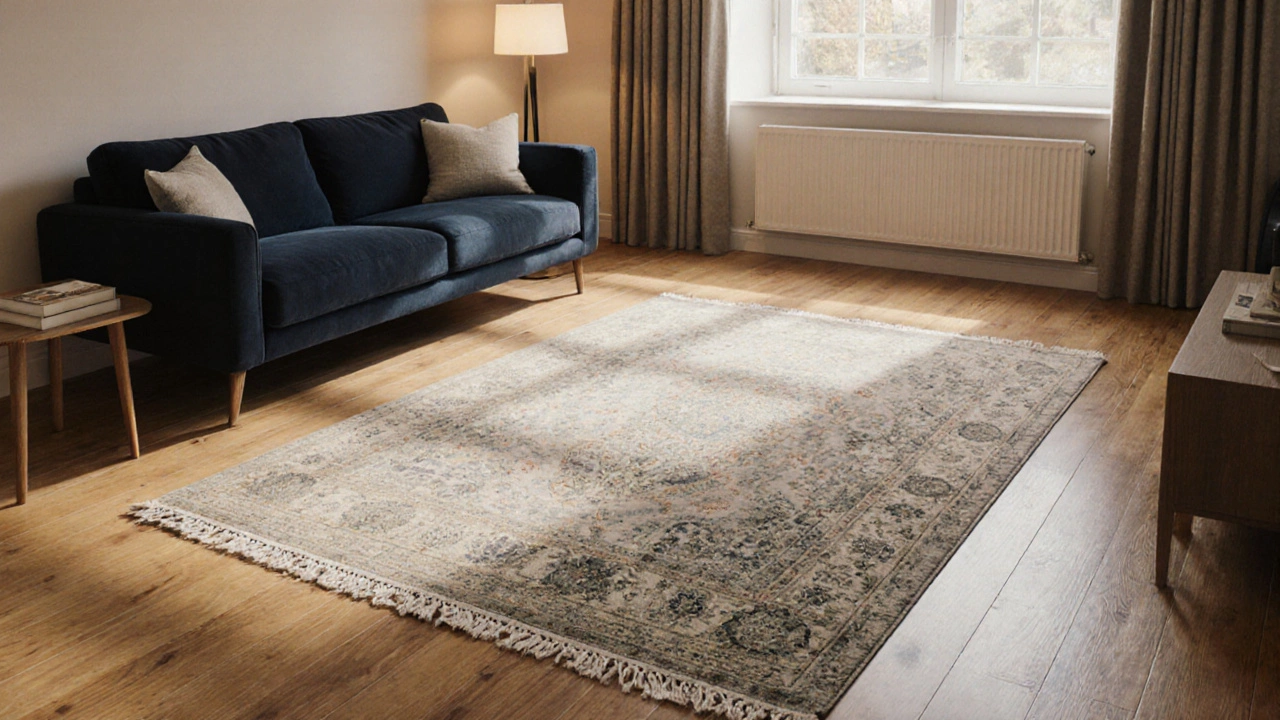
Rug Cost Calculator
Estimate the total investment for your dream rug based on material, construction, and hidden costs. Includes New Zealand pricing considerations.
1. Room Dimensions
2. Material Selection
3. Construction Method
4. Optional Add-Ons
Estimated Total Cost
Base Rug Cost
$0
Hidden Costs
$0
Total Investment
$0
Including 10% contingency for unexpected fees
When you start looking at Rug is a floor covering that adds comfort, style, and insulation to any room. A high‑quality rug combines premium materials, skilled craftsmanship, and thoughtful design to last for decades. That level of quality comes with a price tag, and the numbers can vary wildly. This guide breaks down exactly why a high quality rug cost can range from a few hundred dollars to tens of thousands, and shows you how to budget smartly.
Key Takeaways
- Material is the biggest price driver - wool and silk are the most expensive.
- Hand‑knotted rugs cost 3‑5× more than machine‑made equivalents.
- Size matters: price per square foot drops as the rug gets larger, but total cost still rises.
- NewZealand‑made rugs carry a premium for local labor and sourcing.
- Hidden costs include padding, shipping, and customs duties for imported pieces.
What Makes a Rug "High Quality"?
Quality in a rug isn’t just about looking good. It’s a mix of four measurable factors:
- Material - Natural fibers like wool, silk, and cotton have different durability and feel.
- Construction - Hand‑knotted, hand‑tufted, or machine‑woven methods affect longevity.
- Design & Origin - Traditional patterns (Persian, Moroccan, etc.) often involve centuries‑old techniques.
- Finish - Proper shearing, fringe work, and backing improve wear resistance.
When all four line up, you have a rug that can survive heavy foot traffic, stay vibrant, and retain value over time.
Material Costs: Wool vs. Silk vs. Synthetic
Below is a quick snapshot of average material costs per square foot in 2025 USD. The numbers include raw fiber, dye, and basic finishing.
| Material | Cost (USD) | Durability Rating |
|---|---|---|
| Wool | 12‑20 | 9/10 |
| Silk | 45‑70 | 8/10 |
| Cotton | 8‑14 | 7/10 |
| Polypropylene (synthetic) | 3‑6 | 5/10 |
Wool remains the sweet spot for most high‑end homes because it balances softness, resilience, and price. Silk is the luxury choice for low‑traffic rooms where a luminous sheen matters.
Construction Techniques and Their Price Impact
How a rug is built is often the biggest multiplier on price.
- Hand‑knotted is the most labor‑intensive method. Artisans tie each knot by hand, resulting in a density of 100‑200 knots per square inch. Expect a 3‑5× price increase over machine‑woven pieces.
- Hand‑tufted rugs use a tufting gun to pull yarn through a backing. They’re quicker to produce and typically cost 1.5‑2× a hand‑knotted rug.
- Machine‑woven rugs are mass‑produced on looms. They offer consistent quality at the lowest price point.
When you see a price tag of $5,000 for a 5‑by‑7ft hand‑knotted wool rug, the knot count alone often accounts for $3,000‑$4,000 of that total.
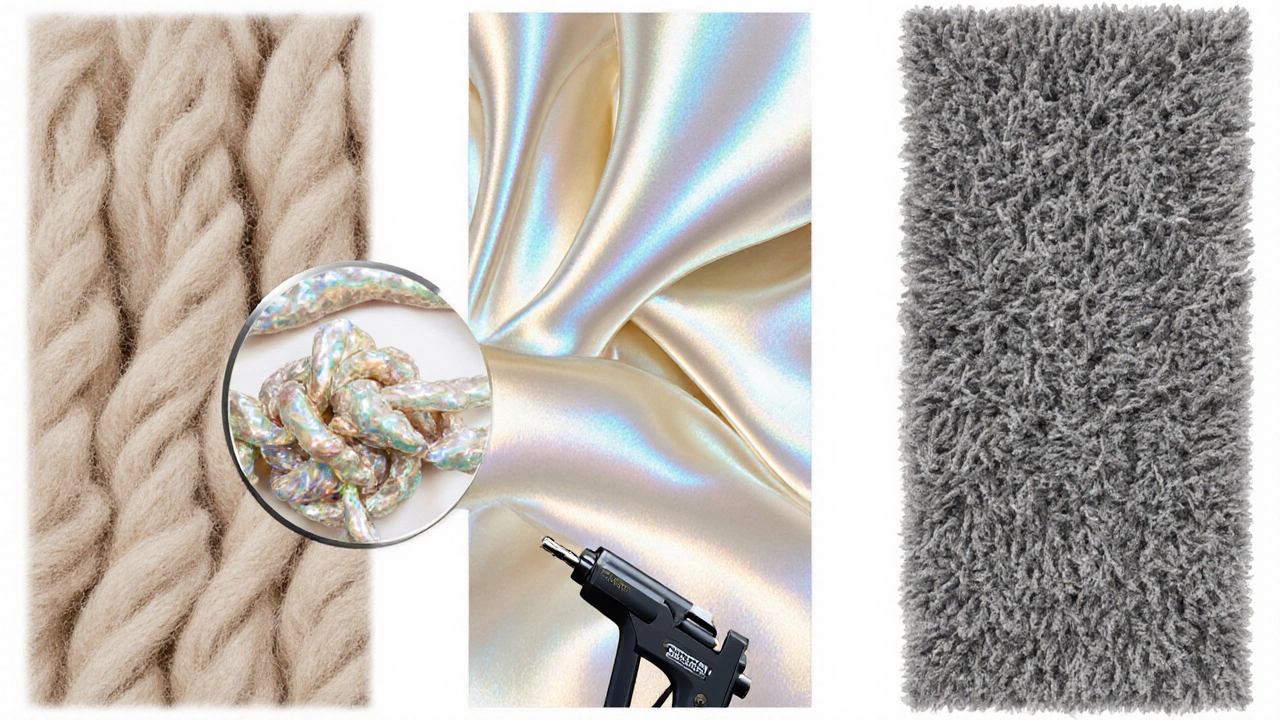
Size, Shape, and the Per‑Square‑Foot Rule
Most retailers quote a per‑square‑foot price, but the rule isn’t linear. Larger rugs benefit from economies of scale, while very small runners can be disproportionately expensive because of edge finishing.
| Size | Hand‑Knotted | Hand‑Tufted | Machine‑Made |
|---|---|---|---|
| 2×3ft (Runner) | 1,200‑1,800 | 600‑900 | 150‑250 |
| 5×7ft (Living Room) | 5,000‑8,000 | 2,500‑3,500 | 600‑1,200 |
| 8×10ft (Open Plan) | 9,000‑14,000 | 4,500‑6,500 | 1,200‑2,000 |
Notice how the per‑square‑foot cost drops from roughly $150 for a small runner to $125 for a large 8×10ft area rug when both are hand‑knotted.
Regional Influences: Why New Zealand Rugs Can Be Pricier
In Auckland and the wider NewZealand market, two factors push prices up:
- Local labor costs - Skilled artisans in NZ earn higher wages than in many Asian manufacturing hubs.
- Material sourcing - High‑quality NewZealand wool is prized for its fine micron count, but it comes at a premium.
A locally made 6×9ft hand‑knotted wool rug typically starts around NZ$10,000 (≈US$6,200), whereas an imported equivalent from Turkey might be US$4,500‑$5,500.
Hidden Costs You Can’t Ignore
Even after you’ve nailed down the base price, additional expenses can surprise you:
- Padding - A quality rug pad adds $2‑$5 per square foot and protects both floor and rug.
- Shipping & handling - Heavy wool rugs often require freight. Expect $200‑$800 depending on distance.
- Customs duties - Importing a Persian rug into NewZealand can incur a 10% duty plus GST.
- Cleaning & maintenance - Professional cleaning for a large hand‑knotted rug runs $150‑$300 annually.
Adding these items can boost the total investment by 15‑30%.
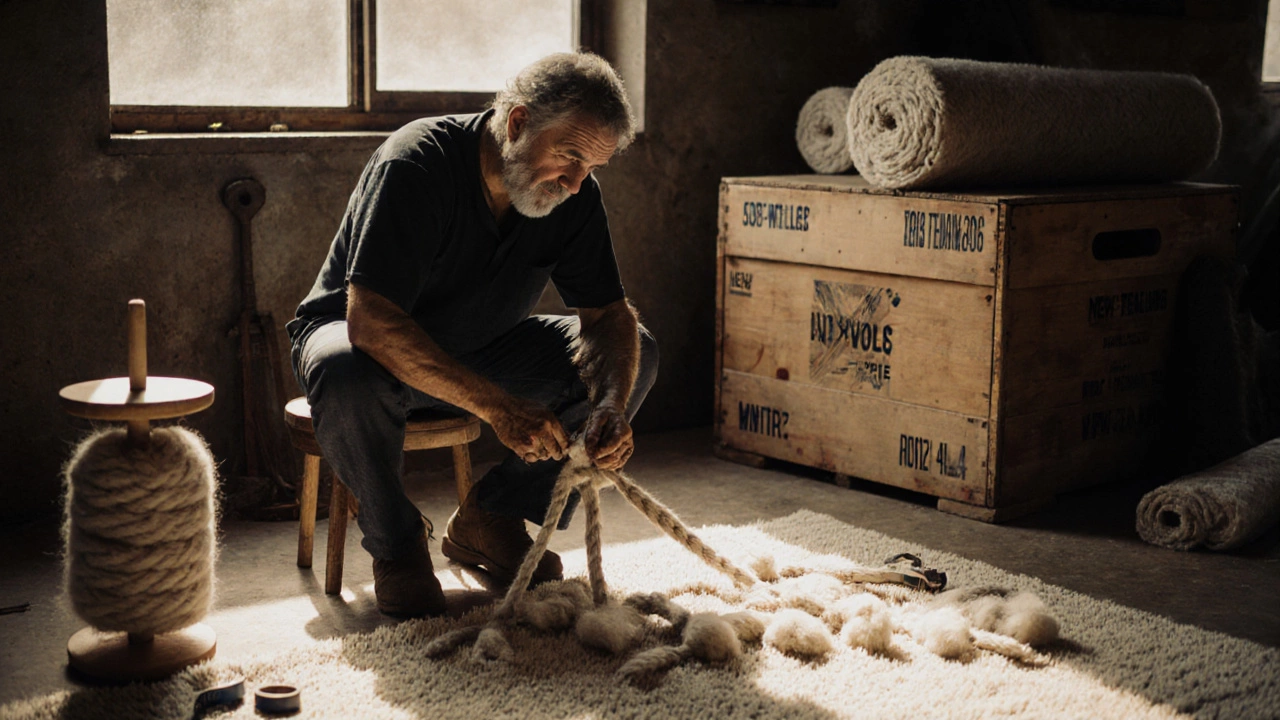
Budget‑Friendly Strategies Without Sacrificing Quality
- Choose a hand‑tufted wool rug instead of hand‑knotted - you still get natural fibers and nice texture at half the price.
- Opt for a medium‑size runner and place a larger area rug under a coffee table to create visual balance without covering the whole floor.
- Buy from local artisans during off‑season sales; many NZ studios clear inventory in winter.
- Consider blended fibers (wool‑silk mix) for a silk‑like sheen at a lower cost.
Checklist: How to Calculate Your Rug Budget
- Define the room’s dimensions and desired rug shape.
- Select material (wool, silk, cotton, synthetic).
- Choose construction method (hand‑knotted, hand‑tufted, machine‑woven).
- Calculate base price using the per‑square‑foot ranges above.
- Add padding, shipping, and any import duties.
- Factor in annual cleaning and maintenance costs.
- Add a 10% contingency for unexpected fees.
Following this list keeps surprises to a minimum and helps you stay within your target range.
Frequently Asked Questions
What is the average lifespan of a high‑quality wool rug?
When properly maintained, a hand‑knotted wool rug can last 50‑100years, while hand‑tufted pieces typically endure 20‑30years.
Are silk rugs worth the higher price?
Silk offers an unmatched luster and softness, but it’s best for low‑traffic areas like bedrooms or formal dining rooms. If you value visual impact over heavy use, the premium can be justified.
How much does a rug pad add to the cost?
A quality pad typically runs $2‑$5 per square foot. For a 5×7ft rug, expect an extra $70‑$175.
Can I import a Persian rug directly to NewZealand?
Yes, but you’ll pay a 10% import duty plus GST. Shipping for a 6×9ft rug can add $400‑$600.
What’s the best way to clean a wool rug at home?
Vacuum gently with a low‑suction setting, spot‑clean spills with a mild detergent, and have it professionally deep‑cleaned every 1‑2years.
By understanding material, construction, size, and hidden costs, you can confidently answer the question “how much does a high quality rug cost?” and pick a piece that fits both your aesthetic and your wallet.

